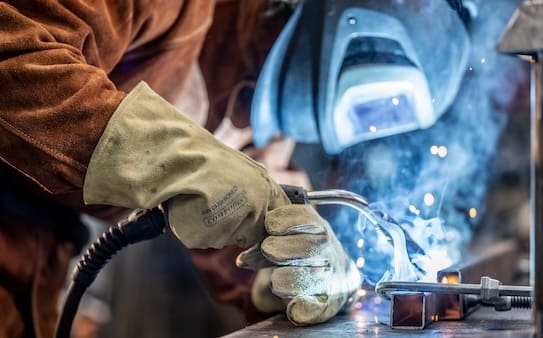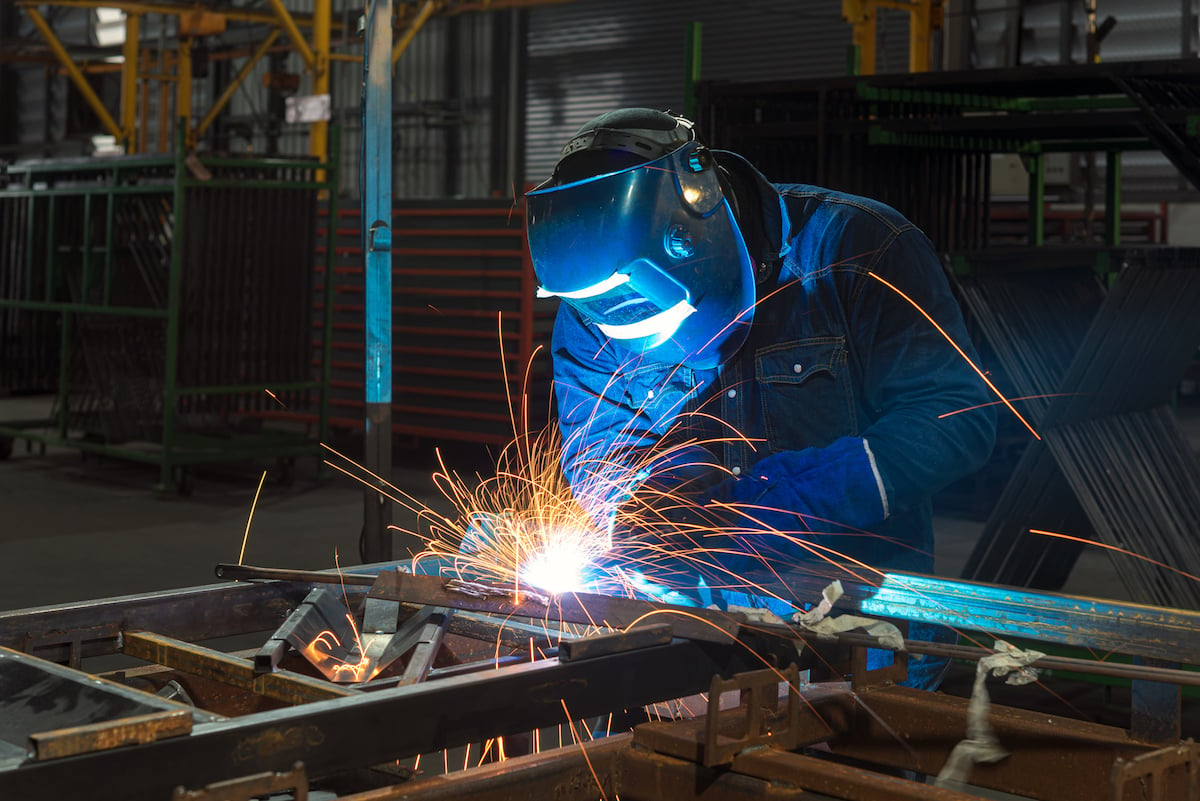What triggers weld porosity and how Belgrade Welding fixes them
Typical Welding Fixing Issues and How to Address Them Successfully
Welding fixings frequently encounter a variety of concerns that can jeopardize the stability of the last item. Usual issues include inadequate penetration, porosity, and imbalance, to name a few. Each issue offers unique obstacles that call for details approaches for resolution. Recognizing these concerns is important for welders intending to enhance their results and abilities. This discussion will certainly discover these typical welding fixing problems and efficient approaches to address them.
Poor Penetration
Poor penetration occurs when the weld steel stops working to completely fuse with the base product, leading to weak joints and prospective structural failings. This concern frequently originates from not enough warmth input, incorrect electrode angle, or improper welding rate. Welders may encounter poor infiltration because of a mistake of the needed specifications for a certain product thickness or kind. In addition, contamination on the base material's surface area can prevent effective bonding, aggravating the issue. To deal with poor infiltration, welders must guarantee appropriate settings on their devices and maintain a tidy job surface. Routine inspection of welds is recommended to recognize any kind of deficiencies early, enabling prompt adjustments and the prevention of compromised architectural stability in bonded settings up.
Porosity
Porosity is a common flaw in bonded joints that shows up as small gas bubbles trapped within the weld steel. This issue can jeopardize the stability of the weld, leading to reduced stamina and prospective failure under stress. Montana Mobile Welding and Repair. Porosity generally occurs from contamination, wetness, or improper welding techniques, which enable gases to escape right into the liquified weld pool. To address porosity, welders need to ensure appropriate surface prep work, keep a clean workplace, and make use of suitable welding criteria. In addition, selecting the appropriate filler product and shielding gas can reduce gas entrapment. Normal inspection and testing of welds can help identify porosity early, ensuring timely restorative actions are taken, thereby protecting the high quality and reliability of the welded structure
Imbalance
Imbalance in welding can emerge from various factors, consisting of inappropriate arrangement and thermal expansion. Comprehending the root triggers is essential for effective resolution. A number of correction techniques are readily available to realign parts and ensure architectural integrity.
Root causes of Imbalance
Welding misalignment usually originates from a range of underlying issues that can compromise architectural stability. One primary cause is inappropriate fit-up of parts prior to welding, which can cause spaces and unequal surface areas. Variations in thermal growth during the welding process can likewise result in distortion, especially if the products being signed up with have various coefficients of expansion. Furthermore, poor fixturing and clamping may fail to hold parts safely in position, bring about activity during welding. Poorly kept devices, including welding equipments and tools, might present incongruities in the weld grain, additional adding to misalignment. Operator error, stemming from inadequate training or experience, can also play a considerable role in producing misaligned welds.

Adjustment Strategies Readily Available
Addressing imbalance effectively requires a mix of rehabilitative strategies customized to the specific issues available. One common method is making use of fixtures or jigs to hold parts in the appropriate setting during welding, ensuring consistent alignment. In addition, pre-heating the materials can help in reducing distortion and enhance fit-up. For substantial imbalance, mechanical realignment techniques, such as utilizing hydraulic jacks or clamps, can be used to remedy the setting prior to welding. Post-weld warm treatment might additionally be required to relieve anxieties brought on by imbalance. Mindful evaluation and change during the configuration phase can protect against misalignment problems from becoming substantial troubles, promoting a smoother welding procedure and boosting overall architectural honesty.
Distortion
Distortion is a common difficulty in welding that can arise from different factors, including uneven heating and cooling. Recognizing the causes of distortion is essential for implementing efficient prevention techniques. Addressing this issue not just improves architectural stability however also boosts the total top quality of the weld.
Causes of Distortion
When subjected to the extreme warmth of welding, products usually go through adjustments that can lead to distortion. This phenomenon largely arises from thermal expansion and tightening during the welding process. As the weld location warms up, the product expands; upon cooling, it gets, which can produce internal tensions. Furthermore, unequal home heating throughout a workpiece can intensify these stress and anxieties, resulting in bending or bending. The kind of material likewise plays a significant function; steels with varying thermal conductivity and coefficients of expansion may react in different ways, causing unpredictable distortions. Moreover, poor joint design and insufficient fixturing can add to misalignment during welding, boosting the possibility of distortion. Understanding these causes is important for efficient welding repair service and prevention approaches.
Avoidance Techniques
Reliable prevention techniques for distortion throughout welding focus on managing warm input and making certain correct joint design. Maintaining a consistent warm input aids to lessen thermal growth and tightening, which can cause distortion. Using techniques such as preheating the workpiece can also minimize the temperature gradient, promoting uniform heating. In addition, choosing appropriate joint styles, such as T-joints or lap joints, can improve stability and decrease stress focus. Implementing correct fixturing to secure the workpieces in position even more aids in keeping positioning throughout the welding process. Ultimately, staggered welding sequences can disperse warm a lot more evenly, avoiding local distortion. By applying these approaches, welders can substantially decrease the probability of distortion and enhance the overall top quality of their welds.
Fracturing
Splitting is a common concern run into in welding repair services, frequently resulting from numerous aspects such as improper cooling prices, product choice, or poor joint prep work. The occurrence of cracks can significantly jeopardize the honesty of the weld, bring about prospective failings throughout procedure. To resolve this problem, welders need to check here first assess the origin causes, guaranteeing that materials work and appropriately picked for the details application. Furthermore, controlling the air conditioning rate during the welding procedure is vital; fast air conditioning can cause tension and lead to splitting. Appropriate joint layout and prep work also contribute to minimizing the danger. Implementing these approaches can boost weld quality and toughness, inevitably decreasing the probability of splitting in finished weldments.

Insufficient Blend
A significant concern in welding repairs is incomplete blend, which happens when the weld metal does not effectively bond with the base product or previous weld passes - Belgrade Fabrication. This issue can lead to weaknesses in the joint, possibly endangering the stability of the bonded structure. Elements adding to incomplete combination include not enough warm input, inappropriate welding technique, and contamination of the surfaces being joined. To address this concern effectively, welders ought to ensure correct pre-weld cleansing and surface prep work, along with adjust their welding parameters to achieve appropriate penetration and blend. Routine evaluation during the welding process can also assist recognize incomplete fusion early, enabling timely rehabilitative procedures to improve the total quality of the weld
Overheating
While welding repairs can enhance architectural stability, overheating presents a considerable challenge that can result in product destruction. Extreme warm during welding can alter the mechanical buildings of metals, resulting in minimized strength, increased brittleness, and warping. This phenomenon is specifically essential in high-stress applications where structural integrity is vital. Recognizing overheating can involve visual inspections for discoloration or distortion, as well as keeping track of temperature throughout the welding procedure. To minimize the risks related to overheating, welders must utilize proper methods, such as regulating heat input, changing travel speed, and utilizing suitable filler products. In addition, applying pre- and post-weld warmth therapies can assist restore material homes and boost the total quality of the fixing, guaranteeing lasting performance and safety.
Often Asked Concerns
What Are the Typical Indicators of a Welding Defect?

How Can I Evaluate My Welds for Top quality?
To examine welds for high quality, one can utilize aesthetic inspections, ultrasonic testing, and radiographic techniques. Each method guarantees structural check this stability, determines problems, and verifies adherence to defined requirements, ultimately improving the integrity of the welded joints.
What Security Preventative Measures Should I Take While Welding?
When welding, one must focus on safety and security by using suitable individual safety devices, making certain appropriate ventilation, securing combustible products away, preserving a clean work area, and understanding environments to stop mishaps and injuries.
Can I Repair a Weld Without Remodeling the Entire Joint?
Repairing a weld without redoing the entire joint is feasible, depending upon the damage (Montana Mobile Welding and Repair Belgrade). Techniques such as grinding, including filler material, or utilizing a welding process can successfully address certain imperfections while protecting the surrounding framework
What Tools Are Important for Reliable Welding Fixes?
Necessary devices for efficient welding repair work consist of a welding maker, cable brush, grinder, safety equipment, clamps, and filler materials. Each device plays an essential duty in guaranteeing top quality and safety throughout the fixing procedure. Porosity commonly occurs from contamination, dampness, or improper welding methods, which permit gases to run away right into the molten weld swimming pool. Badly maintained devices, consisting of welding devices and tools, might present disparities in the weld grain, more adding to imbalance. When subjected to the intense warm of welding, materials frequently undergo modifications that can lead to distortion. Fracturing is an usual issue experienced in welding repair services, often resulting from numerous factors such as improper air conditioning rates, product option, or insufficient joint preparation. A considerable issue in welding repair services is insufficient combination, which takes place when the weld metal does not sufficiently bond with the base product or previous weld passes.